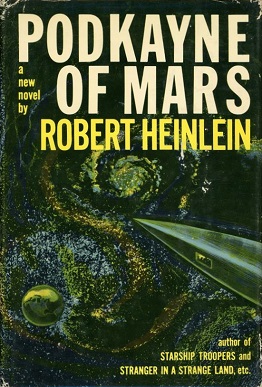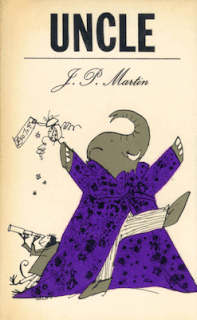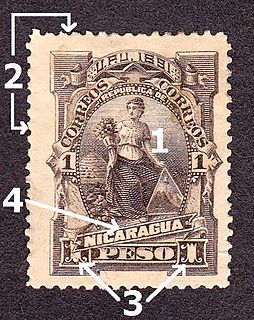
Podkayne of Mars is a science fiction novel by American writer Robert A. Heinlein, originally serialised in Worlds of If, and published in hardcover in 1963. The novel is about a teenage girl named Podkayne "Poddy" Fries and her asocial younger genius brother, Clark, who leave their home on Mars to take a trip on a spaceliner to visit Earth, accompanied by their uncle.
Uncle and his Detective (1966) is a children's story by J. P. Martin, as part of his Uncle series of books.
The swamp eels are a family (Synbranchidae) of freshwater eel-like fishes of the tropics and subtropics. Most species are able to breathe air and typically live in marshes, ponds and damp places, sometimes burying themselves in the mud if the water source dries up. They have various adaptations to suit this lifestyle; they are long and slender, they lack pectoral and pelvic fins, and their dorsal and anal fins are vestigial. They lack scales and a swimbladder, and their gills open on the throat in a slit or pore. Oxygen can be absorbed through the lining of the mouth and pharynx, which is rich in blood vessels and acts as a "lung".
Tintin and the Blue Oranges is a 1964 French film directed by Philippe Condroyer and starring Jean-Pierre Talbot as Tintin. It was the second live-action movie, with an original story based on characters from the comic book series The Adventures of Tintin, written and drawn by the Belgian artist Hergé. The accompanying book version is in photos and text rather than the usual comic-book style.

Mickey's Twice Upon a Christmas is a 2004 American computer-animated direct-to-video fantasy comedy anthology film produced by DisneyToon Studios and animation production by Blur Studio and Sparx Animation France. It is a sequel to Mickey's Once Upon a Christmas. This feature is presented in five segments Mickey Mouse, Minnie Mouse, Pluto, Goofy, Max, Donald Duck, Daisy Duck, Huey, Dewey, and Louie, and Scrooge McDuck in five different segments. Along with the Mickey's PhilharMagic theme park attraction, this production was one of the first to depict the Mickey Mouse characters with 3D computer animation. It is the final direct-to-video film to feature both Wayne Allwine and Alan Young, who both died in different years.

Peter-John "PJ" Marsh is an Australian former professional rugby league footballer of the 2000s. A Queensland State of Origin representative hooker, he played his club football in the NRL for the Parramatta Eels, New Zealand Warriors and Brisbane Broncos.

Secret Water is the eighth book in Arthur Ransome's Swallows and Amazons series of children's books. It was published on 28 November 1939.

Five on a Treasure Island is a popular children's book by Enid Blyton. It is the first book in The Famous Five series. The first edition of the book was illustrated by Eileen Soper.
The Feast of the Seven Fishes, also known as The Eve, is an Italian-American celebration of Christmas Eve with dishes of fish and other seafood.

The Invention of Hugo Cabret is an American historical fiction novel written and illustrated by Brian Selznick and published by Scholastic. The hardcover edition was released on January 30, 2007, and the paperback edition was released on June 2, 2008. With 284 pictures between the book's 533 pages, the book depends as much on its pictures as it does on the words. Selznick himself has described the book as "not exactly a novel, not quite a picture book, not really a graphic novel, or a flip book or a movie, but a combination of all these things". The book won the 2008 Caldecott Medal, the first novel to do so, as the Caldecott Medal is for picture books.

The big-scale sand smelt is a species of fish in the Atherinidae family. It is a euryhaline amphidromous fish, up to 20 cm in length.

An eel is any ray-finned fish belonging to the order Anguilliformes, which consists of four suborders, 20 families, 111 genera, and about 800 species. Eels undergo considerable development from the early larval stage to the eventual adult stage, and most are predators. The term “eel” originally referred to the European eel, and the name of the order means “European eel-shaped.”
"The Story of Lucy and Jessie" is the 104th episode of the ABC television series, Desperate Housewives. It is the seventeenth episode of the show's fifth season and aired on March 15, 2009.
The Lion, the Witch and the Wardrobe is a British children's television drama first broadcast by the BBC in 1988. It was the first series of The Chronicles of Narnia that ran from 1988 to 1990.

Uncle (1964) is a children's novel written by J. P. Martin, the first book of six forming the Uncle series. It is named after the main character, a rich philanthropic elephant who lives in a huge fantastical castle populated by many other eccentric animals and people. It was illustrated, like the others in the series, by Quentin Blake.
Uncle and the Treacle Trouble (1967) is a children's novel written by J. P. Martin, the fourth of his Uncle series of six books. It was illustrated, like the others in the series, by Quentin Blake.
"T.: The Terrestrial" is the sixteenth episode of the seventh season of the animated sitcom Futurama. It originally aired on Comedy Central on June 26, 2013. The episode was written by Josh Weinstein and directed by Lance Kramer. In the episode, Fry becomes marooned on a distant planet, where he befriends an inhabitant who helps protect him and find his way home.
"The Inhuman Torch" is the eighteenth episode of the seventh season of the animated sitcom Futurama. It originally aired on Comedy Central on July 10, 2013. The episode was written by Dan Vebber and directed by Frank Marino. In the episode, Bender becomes a firefighter, and ends up housing a solar flare who wants to blow up the Earth from the inside.
"The Secret of Atlantis" is a 32-page funny animal comic book story written and drawn by Carl Barks, and lettered by his wife, Garé Barks.
















